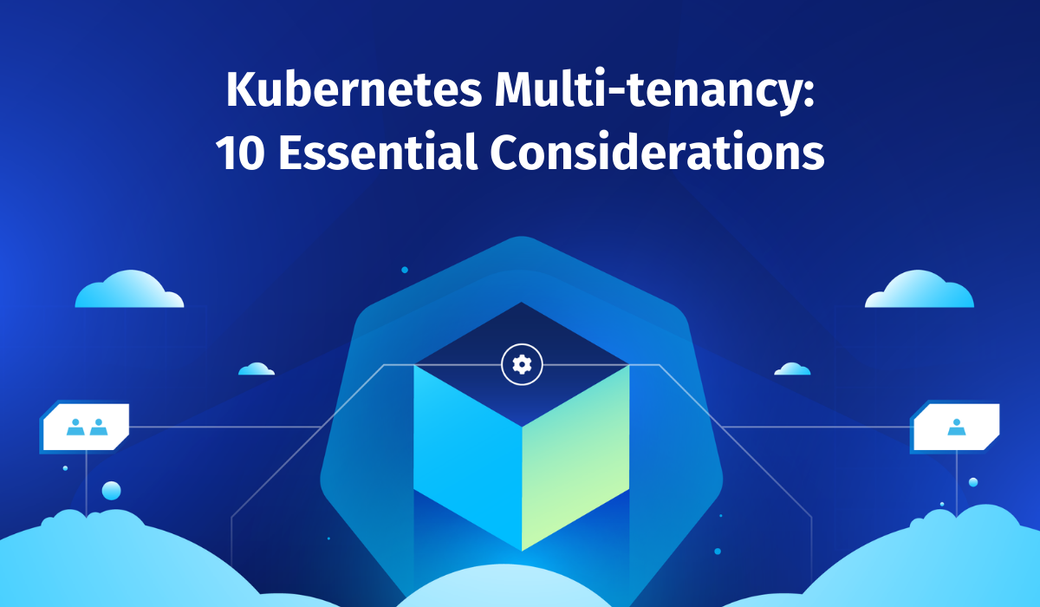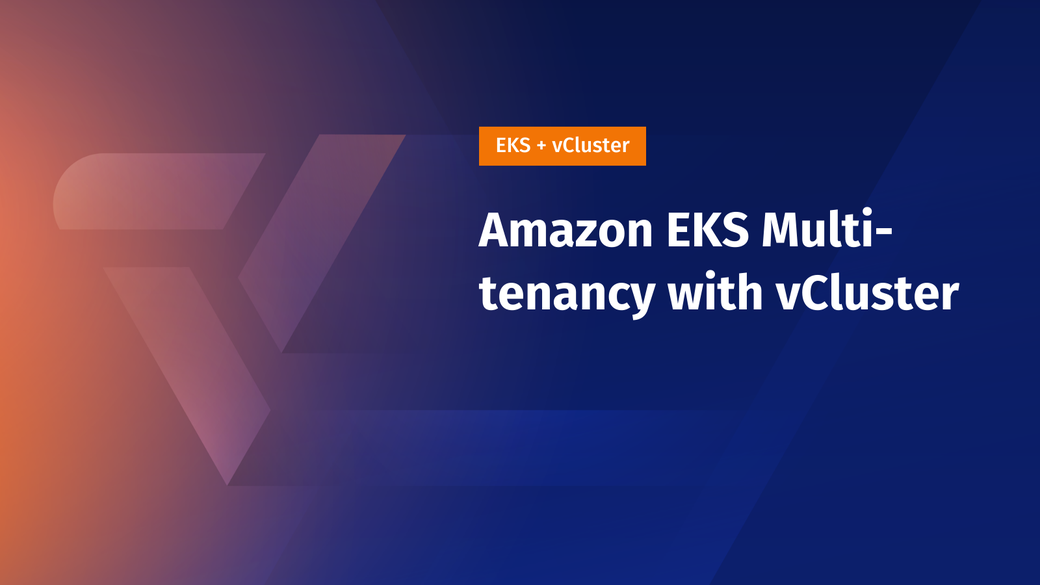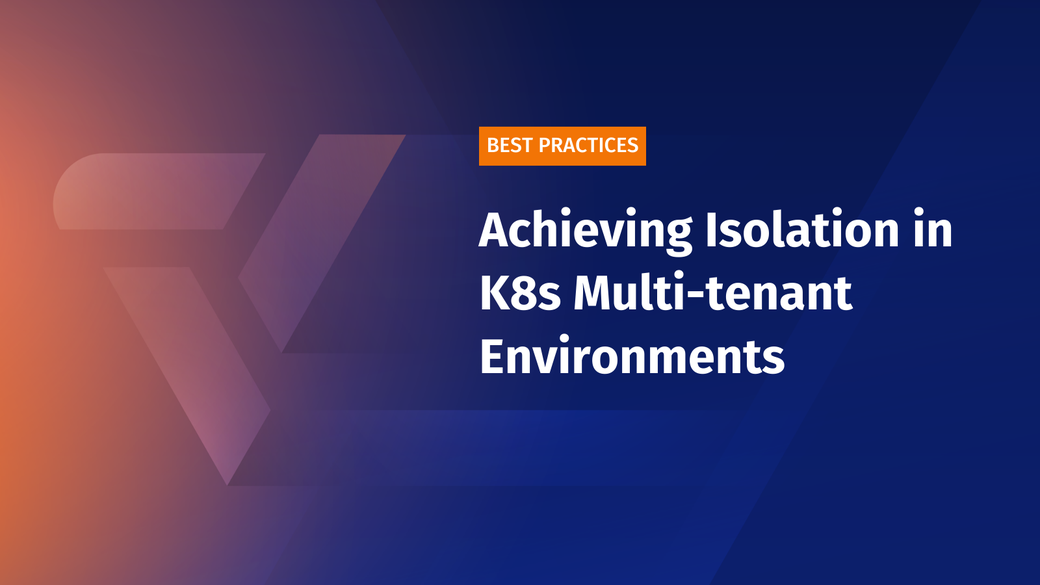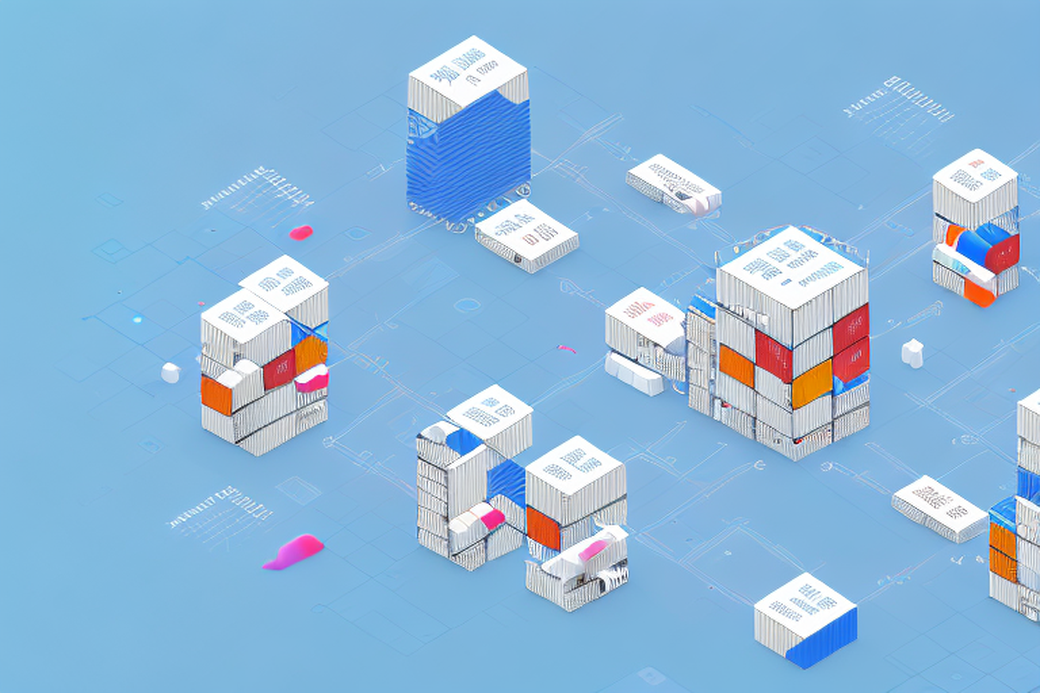Table of Contents
Kubernetes’s popularity continues to grow as increasing numbers of companies adopt it to manage their containerized workloads. According to the 2021 annual CNCF report, ninety-six percent of enterprises surveyed use Kubernetes to some extent—the highest since the survey began in 2016.
While Kubernetes adoption has enabled many businesses to optimize resource usage, it’s still a challenge for multiple entities, or tenants, to share resources securely in a Kubernetes cluster. The resource-sharing practice in which each user’s workload and data are isolated from one another is known as multi-tenancy.
Kubernetes does not offer multi-tenancy by default. Enabling a Kubernetes multi-tenant architecture comes with significant challenges, especially in regard to achieving true cluster isolation and fair resource allocation. In this article, you’ll learn about ten essential considerations when opting to use Kubernetes multi-tenancy.
#Key Takeaways
-
Maximize Resource Usage: To efficiently use resources and to avoid the ‘noisy neighbor’ problem, set up resource usage limits for each tenant in a multi-tenant Kubernetes cluster
-
Implement Cost Tracking + Audit Logging: Monitor your infrastructure costs effectively by implementing cost-tracking tools such as Prometheus or Kubecost. Implementing audit logging is equally critical, which can help quickly identify issues like unusual activity or slow API requests.
-
Prioritize Security with RBAC & Encryption at Rest: Utilize the Role-Based Access Control (RBAC) system to manage who has access to what components within an organization on Kubernetes clusters and simultaneously maintain data security through encrypting sensitive information stored in secrets using options like HashiCorp Vault.
According to the 2021 annual CNCF report, 96% of enterprises surveyed use Kubernetes to some extent. This is the highest percentage since the survey began in 2016.
While Kubernetes adoption provides opportunities for optimizing resource usage across multiple Kubernetes clusters, ensuring secure sharing of these resources poses significant challenges, especially when different tenants are involved. The resource-sharing practice in which each user’s workload and data are isolated from one another is known as multi-tenancy.
Kubernetes does not offer multi-tenancy by default. Enabling a Kubernetes multi-tenant architecture comes with significant challenges. This is especially true when achieving true cluster isolation and fair resource allocation. In this article, you’ll learn about 10 essential considerations when using Kubernetes multi-tenancy.
#Introduction to Kubernetes Multi-Tenancy
Kubernetes multi-tenancy is an architectural model where multiple tenants share a cluster’s resources, including storage, networking, CPU, compute, and control plane. This model also includes resource quotas and limits that act as boundaries for resource usage. Sharing Kubernetes cluster resources helps to reduce costs and enhance productivity through faster and more scalable container-based deployments.
While it’s possible to use single-tenant clusters rather than multi-tenant ones, this solution is ineffective and problematic, particularly at scale. For instance, imagine having to spin up and manage hundreds or thousands of clusters.
By moving to a multi-tenancy model, a tenant’s resources can be organized into separate groups in the control plane, enabling restricted access or visibility to resources not within the control plane domain. This helps you reduce operating costs, increase accessibility and productivity, and boost your return on investment.
Have questions or concerns about Kubernetes multi-tenancy? Talk to an expert today to achieve 70% cost savings while developing a great developer experience.
#Multi-Tenancy in Kubernetes : Three Different Ways
#Considerations for Kubernetes Multi-Tenancy
A multi-tenant Kubernetes cluster is not without challenges. For example, by implementing multi-tenancy, you automatically impose limitations on the tenants. While the tenants still have access to many resources within their namespaces, they don’t retain the complete control and capabilities they had with single-tenant clusters.
Another potential issue is the noisy neighbor problem. This happens when a tenant takes up an excessive amount of shared resources, leading to less-than-optimal performance for other tenants. This problem can slow down the latter’s workloads, and sometimes even prevent them from running altogether.
The following list covers ten of the most critical considerations when it comes to effective enterprise-grade Kubernetes multi-tenancy.
#Resource Limits
Tenants should share resources fairly. A tenant using a disproportionate share of cluster resources in a cluster can impair performance for other tenants. To resolve this problem, ensure that you set up resource usage limits for every tenant.
In Kubernetes, this is managed by the ResourceQuota object. This object limits the total consumption of resources per namespace. You can set quotas based on CPU, memory usage, or object counts. If you enable quotas for a namespace, the users have to specify usage limits for each resource, or the request will be rejected. Alternatively, users can set default limits via LimitRanges.
Here’s a sample resource quota file that allocates five CPU requests and a CPU limit of ten to a specific namespace.
apiVersion: v1
kind: ResourceQuota
metadata:
name: user1
spec:
hard:
requests.cpu: "5"
requests.memory: 1Gi
limits.cpu: "10"
limits.memory: 2Gi
Policies like this can be applied to namespaces via the kubectl apply command.
#Cost Tracking
In Kubernetes, it can be surprisingly easy to incur unnecessary cloud costs. This is especially true in multi-tenant environments. To put this in perspective, over thirty-five percent of respondents in a FinOps for Kubernetes survey have seen their Kubernetes-related expenses rise by more than 20% within the space of a year.
The report from the survey also highlights the difficulty in monitoring and instilling practices to curb escalating Kubernetes costs. One of the best ways to reduce costs is to distribute them according to the number of resources a workload consumes.
For multi-tenant Kubernetes clusters, it is important to implement a chargeback model to help allocate and distribute cloud and infrastructure costs and resources among tenants, developer teams, and organizations. This helps promote shared responsibility and accountability among tenants in a cluster, making it easy to enforce chargebacks and bill tenants for resources consumed. Prometheus, Kubecost, and Grafana are popular solutions to monitor Kubernetes costs.
#Audit Logging
Another essential element of Kubernetes multi-tenancy is auditing. A Kubernetes audit log contains a chronological set of relevant records describing the sequence of events in a cluster. These log results help quickly identify and resolve issues regarding unusual cluster activity, attacks, slow API requests, and failed authentications. As part of its auditing process, the Kubernetes cluster tracks user, application, and control plane activities.
Other logged actions include URL requests made through the Kubernetes API server, who made the request, time of request, origin, and destination, as well as the reasons for approval or rejection. Audit logging can be configured via the Loft config in Loft UI, or through the secret loft/loft-config. Other tools to consider for audit logging in Kubernetes include Prometheus and Grafana.
Kubernetes provides a variety of logging mechanisms that you can use to collect and analyze logs from containers running on nodes. These include built-in tools like kubectl logs and third-party solutions like Fluentd, Elasticsearch, and Grafana. Here’s a comprehensive guide to Kubernetes logging and also check out Kubernetes logging best practices.
#Network Policies
By default, Kubernetes cluster configurations allow any service on any namespace to be accessible. As a result, the pods are open to all traffic. Network policies allow you to specify how pods are can interact with various entities on the network.
In essence, network policies allow you to control which ports are accessible to the pods on the network. Network policies help you create default blocking rules. When you’re defining a network policy based on a namespace or pod, you can use a selector to set the traffic that can pass to or from the pod corresponding to that selector.
Allowing only the required traffic is a security best practice, and Kubernetes allows us to implement this via declarative configuration of network policies. Since network policies depend heavily on the labels of pods/namespaces, it is straightforward to deploy rules that would also capture newly created resources. Here is a practitioner’s guide to Kubernetes network policies.
#RBAC
Kubernetes Role-Based Access Control (RBAC) is a form of authorization that helps control tenant access to Kubernetes clusters and network resources. What makes RBAC valuable is its flexibility in adding or modifying Kubernetes access control and permissions. It enables you to specify the Kubernetes components available to each user, as well as what that user can do with each component.
The four objects of the RBAC API are Role, ClusterRole, RoleBinding, and ClusterRoleBinding. A Role defines a set of permissions in which the Role is always responsible for setting permissions in a given namespace, and ClusterRole does the same thing for cluster-wide permissions.
RoleBinding and ClusterRoleBinding are similar to Role and Cluster, but with a broader scope. RoleBinding grants namespace-scoped permissions for Role and ClusterRole, while ClusterRoleBinding grants cluster-wide permissions to all namespaces in that cluster.
#Virtual Clusters
Sharing Kubernetes clusters among team members and organizations can be so complex that many companies have given up on multi-tenancy in favor of provisioning individual Kubernetes clusters. Namespaces can offer a solution to this problem by running isolated environments in a single Kubernetes cluster—but they’re not without limitations.
Teams or engineers that leverage dedicated namespaces are limited to the RBAC permissions assigned to them. When you factor in network policies and admission control, this often means that engineers have less flexibility and control than they would have with a single dedicated cluster.
This can be limiting if, for example, an application requires cluster-scoped resources that are not namespaced, since the developer can only access them via the host cluster. If you want a truly isolated environment, namespaces are not the best option. Virtual clusters help you create a virtual representation of a Kubernetes cluster inside an existing one.
As the name implies, virtual clusters mimic the concept of virtual machines. These clusters provide you with many of the resources present in a standard Kubernetes cluster. It can contain an API server, controller manager, and storage (etcd). One notable solution for creating and running virtual clusters is vcluster by Loft Labs.
You might be interested in our 5 part kubernetes multi-cluster series. In part 1 we talk about Kubernetes multi-cluster deployments, part 2 discusses Kubernetes cluster lifecycle, part 3 describes authentication and access control in Kubernetes, part 4 explains Kubernetes Self-service, and lastly part 5 talks about Kubernetes cost optimization.
#Pod Security
Pod Security addresses a number of problems plaguing Kubernetes’ deprecated PodSecurityPolicy, or PSP, approach. PSPs were effective in providing native cluster-based resource policies that governed the creation and updating of Kubernetes pods. In reality, however, it’s rare to create a pod without leveraging a robust controller that sets permissions for granular policy authorization, consequently reducing security risk.
While PSPs are automatically applied when a pod creation request is made, there is no way to apply them to pods that already exist in the cluster. These shortcomings led to the creation of Pod Security, which is currently in beta. Pod security is an integrated admission controller that can also run as an independent webhook that intercepts requests on the kube-apiserver before persisting them to storage. It evaluates the pod specifications against three policy levels based on Pod Security standards:
Privileged: No restrictions, broadest permission levelBaseline: Minimal restrictions to guard against foreseeable privilege escalationsRestricted: Extreme restrictions
The policy levels can be assigned by labels to namespace resources, allowing for fine-grained policy control per namespace. Using the API server’s AdmissionConfiguration resource, you can configure and define cluster-wide admission policies and exemptions. While Pod Security doesn’t offer all the features available on the deprecated PSP, you can leverage other solutions such as Kyverno, OPA GateKeeper, and Kubewarden for more granular policy control.
#Usage Metrics
Understanding how an application behaves is crucial for scalability and reliability. You can observe the performance of your application in a cluster by monitoring and inspecting the pods, services, namespaces, and other resources in your cluster. The Metrics API lets you examine these resources, enabling you to assess your application’s performance.
Kubernetes provides detailed data on how an application consumes resources. Using Kubernetes’ access control mechanisms, you can configure permissions to allow Kubernetes API clients to access your cluster’s metrics information.
#Secrets Encryption at Rest
Kubernetes uses secrets to store and manage sensitive cluster data such as passwords, usernames, SSH keys, OAuth tokens, and other encryptions. By default, the information in secrets is stored in plaintext in the etcd, but encryption is supported for etcd data at rest.
Each tenant of a multi-tenant cluster accesses and shares one etcd storage. When accessing a Kubernetes control plane, it is advisable to encrypt and store sensitive secrets data at rest. This adds an extra layer of security to your cluster, protecting sensitive information from breaches and facilitating compliance. There are many solutions for storing sensitive data, such as HashiCorp Vault and AWS Secrets Manager.
#Policy Engines
Many organizations have applications that cater to a global audience. As a result, they must comply with a variety of regulatory standards such as GDPR, HIPAA, and PCI, as well as any other regulations or policies in the regions and countries they serve. Policy engines play an important role in Kubernetes’ compliance, security, and configuration management.
They enable you to establish the policies and regulations that govern cluster deployments and applications. Using predefined policies, policy engines can dynamically modify or create configurations. Policy engines such as Gatekeeper and Kyverno can be leveraged to meet legal and compliance requirements while maintaining operational flexibility and development speed.
#Frequently Asked Questions (FAQs)
#What is the difference between single-tenant and multi-tenant Kubernetes?
Single-tenant Kubernetes means that an entire cluster is dedicated to a single user or application, enhancing customization and security. Multi-tenant Kubernetes refers to having multiple applications or users sharing the same infrastructure resources (cluster), which allows for more efficient resource usage but poses higher risks in terms of data security. The cost and management complexities are generally lower with multi-tenancy than with a single tenancy.
#What is namespace multi-tenancy?
Namespace multi-tenancy is a method in cloud computing where each tenant is assigned to their own namespace. In this approach, tenants only have the ability to deploy or modify workloads within their designated namespaces without gaining access to resources of other namespaces.
#Which is better single tenant or multi-tenant? What is namespace multi-tenancy?
Whether a single-tenant or multi-tenant cloud architecture is better depends on your organization’s specific needs. If data security and customization are paramount, then single-tenancy may be advisable. However, multi-tenancy would often serve you better for ease of deployment, efficient resource usage, and cost-effectiveness, particularly in startups or SaaS operations.
#What are the disadvantages of multi-tenancy?
The disadvantages of multi-tenant cloud architecture include a greater security risk due to shared resources, meaning if one customer’s data is compromised, it could potentially affect others.
Also, multitenancy often provides less customization than single-tenant architectures because all customers share the same infrastructure. Finally, determining individual cost responsibilities can be complex in a multi-tenant system since multiple clients share the same database and services.
#What are the risks of multi-tenancy?
Multi-tenancy presents various risks, mainly surrounding data security and privacy. If the architecture is not correctly designed or has vulnerabilities, one tenant’s actions could unintentionally affect others', leading to breaches of sensitive information. Additionally, resource contention can occur if multiple tenants use a high volume of resources simultaneously. This overcrowding can significantly slow down system performance.
#Final Thoughts On Kubernetes Multi-Tenancy
Kubernetes multi-tenancy can be incredibly challenging for high-traffic enterprises with security and reliability requirements, particularly considering the limitations and cost of single-tenant solutions. Despite this complexity, there are several features available to assist you.
Knowledge of the key essentials of Kubernetes multi-tenancy—such as virtual clusters, resource limits, cost tracking, RBAC, and audit logging—can get you started. These core elements will help you achieve a high degree of resource sharing and true cluster isolation, regardless of the number of applications running on your Kubernetes cluster.
Want help with Kubernetes? Talk to an expert today to achieve 70% cost savings while developing a great developer experience.
#Kubernetes Multi-tenancy Series
- Kubernetes Multi-Tenancy – A Best Practices Guide
- Kubernetes Multitenancy: Why Namespaces aren’t Good Enough
- Kubernetes Multi-Tenancy: Why Virtual Clusters Are The Best Solution
- Kubernetes Multi-Tenancy to Unlock End-to-End Testing in the Production Environment
#Multi-tenancy in Kubernetes - Strategies & Considerations
#Additional Articles You May Lik
- Kubernetes Multi-Tenancy with Argo CD And Loft
- [Video] Beyond Namespaces: Virtual Clusters are the Future of Multi-Tenancy
- 5 Tips for Dealing with Kubernetes Day 2 challenges
- Getting the most out of your Delivery Pipeline with Loft & Argo CD
- How Codefresh Uses vcluster to Provide Hosted Argo CD
- What is GitOps and Kubernetes
- Multi-Tenant Kubernetes Clusters: Challenges and Useful Tooling
- Kubernetes Multi-tenancy and RBAC - Implementation and Security Considerations
- Kubernetes Multi-tenancy and RBAC - Management, Automation, Monitoring, and Auditing
- Kubernetes Multi-tenancy and RBAC - Advanced Scenarios and Customization
- A Complete Guide to Kubernetes Cost Optimization
- Best Practices for Achieving Isolation in Kubernetes Multi-Tenant Environments
Photo by Teng Yuhong on Unsplash









